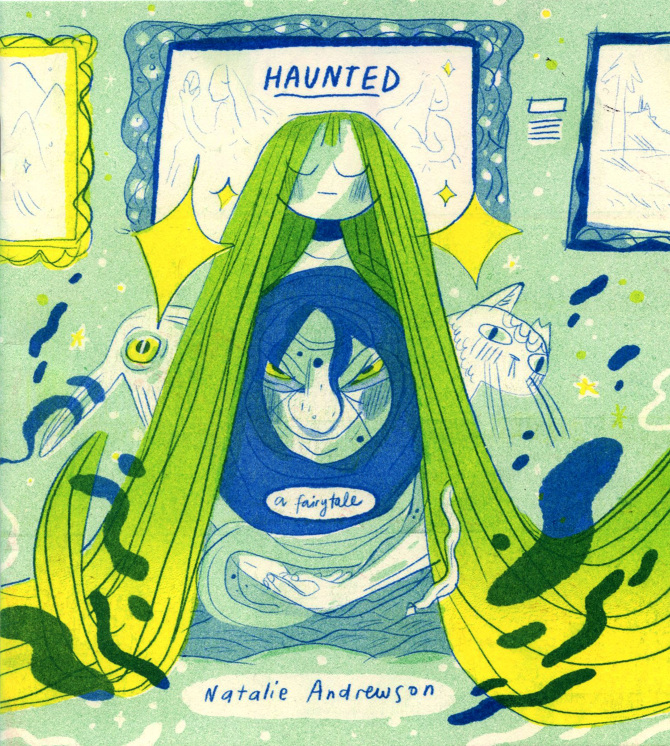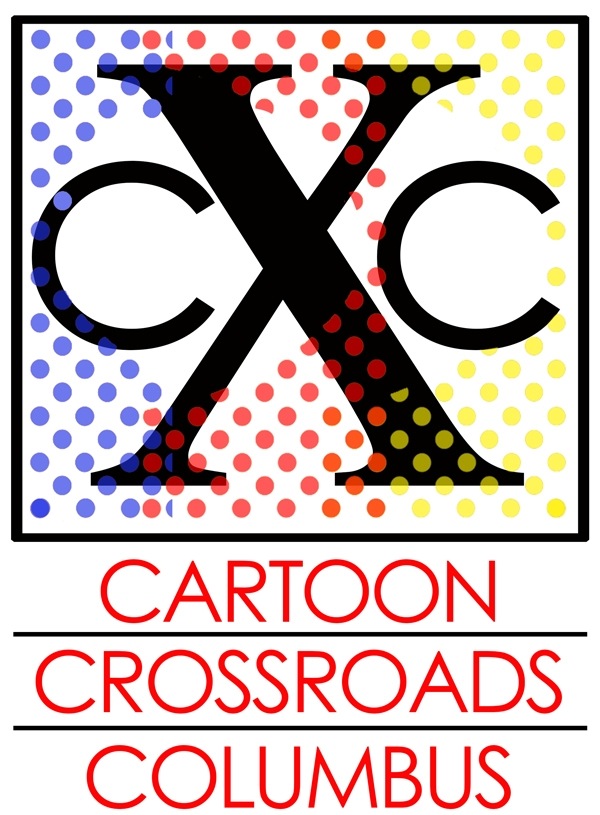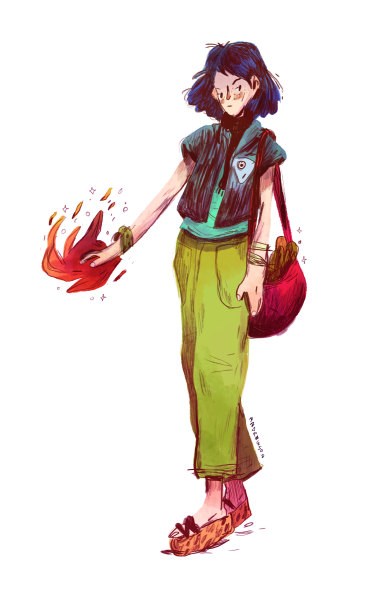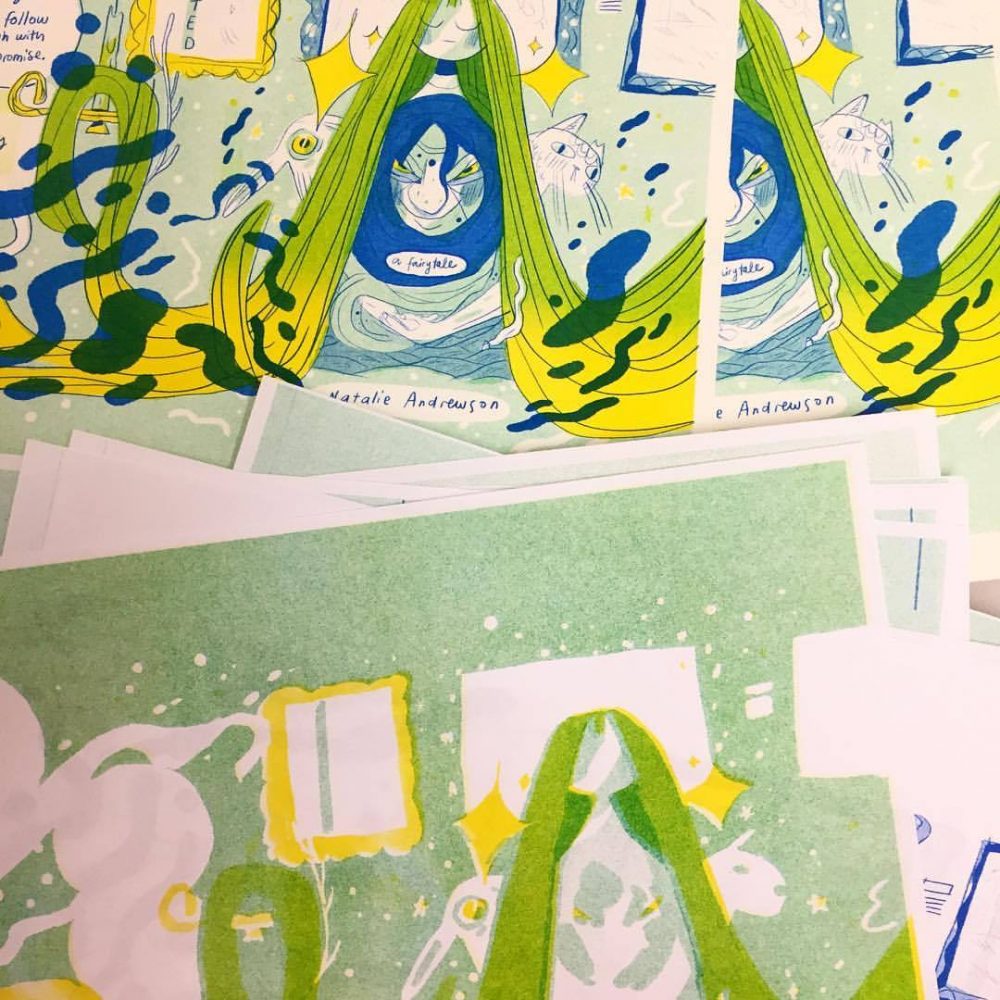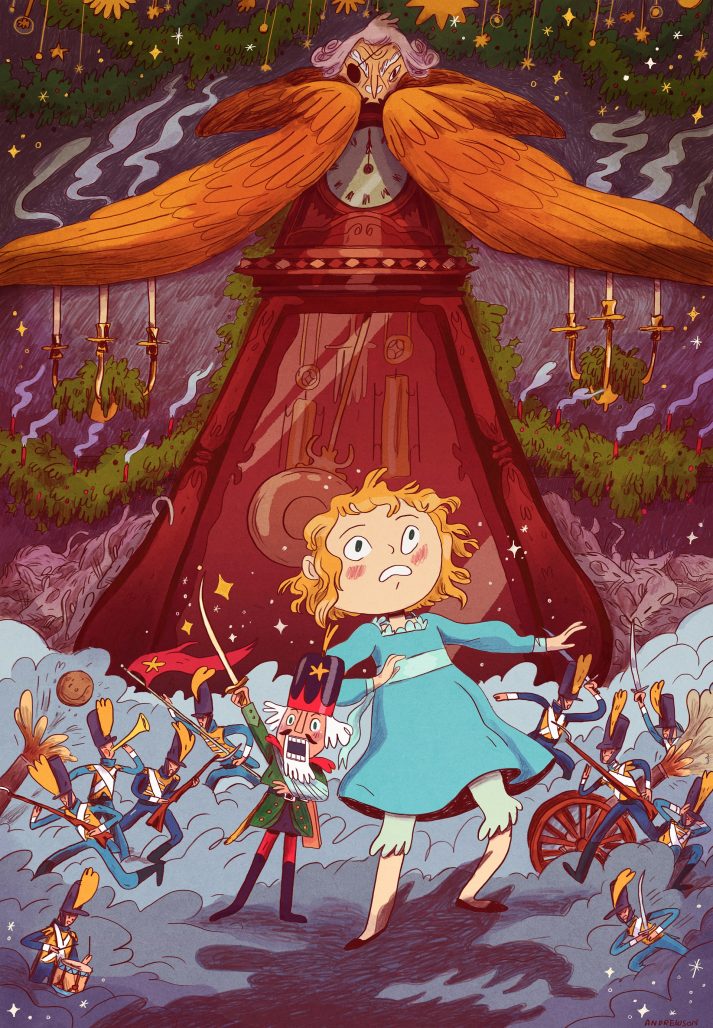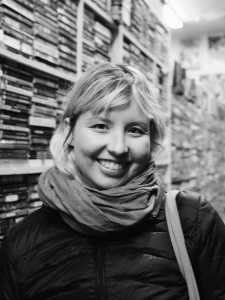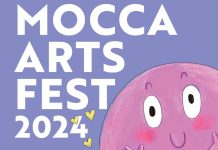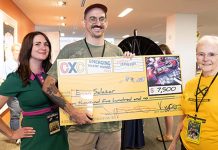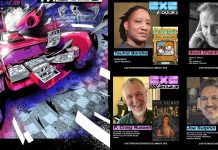Cartoon Crossroads Columbus (or CXC) is a . It’s mission is “to provide an international showcase for the best of cartoon art in all its forms, including comics, animation, editorial cartoons, newspaper strips, and beyond, in a city that is a growing center of importance to comics and cartooning. We also focus on helping the next generation of young cartooning talent develop thriving careers that invigorate the industry for years to come.” In the spirit of this mission, the Comics Beat has conducted a series of interviews with some of the phenomenal cartoonists in attendance at this year’s Cartoon Crossroads Columbus. We hope that these interviews will improve our understanding of these creators voices, techniques, interests and influences as well as provide a platform for comics enthusiasts to discover new artists and challenge their conceptions of comics.
In this interview, we talked with Natalie Andrewson. Natalie is a cartoonist and illustrator based in Brooklyn. She’s specialized in risography and self-published a number of comic book, using that printing method. In addition to these comics, she also provides illustrations for various outlets including The New Yorker, NPR and Hazlitt. She’s currently working on an adaptation of the Nutcracker for First Second that is due for release in late 2019. She gracefully agreed to discuss risography as well as her two fairy tale comics, the self-published riso comic Haunted and the upcoming Nutcracker and the Mouse King.
—
Philippe Leblanc: For those readers who may not be familiar with you and your work, can you tell us a little bit about yourself?
Natalie Andrewson: Sure, I work as a freelance illustrator in Brooklyn, New York and do a combination of editorial work, young adult book illustrations and comics full-time. I grew up in North Carolina hearing pretty dark historical tales and ghost stories that still inspire my work. I’m most interested in telling stories about wild women and the trouble they incite in their life or the trouble they get themselves out of. My comic work is still fairly new but it’s quickly become the most important and probably the most consuming part of my life (in a good way). I’ve always been drawn to narrative work and only very recently, after attending TCAF for the first time a few years ago, did I realize small press and self printed comics were an option. My first comic opportunity, Lemon & Ket, was printed by PEOW! Studios in 2015 and I’m currently working on a graphic novel adaptation of The Nutcracker for First Second which is due out late 2019. Last fall I was an artist in residence at the SVA RisoLAB in NYC and started making more comic work for myself than I ever had before. I split my time now between the working at the RisoLAB, tabling at comic festivals and working on different types of narrative work in my studio.
PL: I’m a fan of risography and how those comics look. How has the process of riso printing influenced the way you make comics?
NA: Yeah, me too, I love the texture and color depth the Riso brings and I’m obsessed with the way it can look like old comics or traditional mediums. I’ve been asked if the Riso influences my process a few times and I feel like I always stumble over the question because my process really hasn’t changed much. I’m definitely using different color combinations I didn’t use before and my work is kind of adapting to how simple or how complicated Risograph layers can be. But I don’t think it’s really changed the way I approach working on comics or illustration. What it has effected is how much confidence I have in making comics, and in my own content, in general. Since my RisoLAB residency I’ve been printing a lot of things for myself that I hadn’t made time for in the past. I’ve realized through Riso just how important it is for me to make physical work. Maybe it hasn’t influenced the way I work so much as it’s influenced how much I work and how easy and satisfying it is to work. It’s made me a better draftsman and designer, a better storyteller and overall it’s made me better at sharing my voice.
PL: Your latest comic, Haunted, is about nostalgia and getting away from it. How would you describe your relationship with nostalgia and why did you want to explore this particular theme?
NA: All of my work has been motivated by nostalgia in one way or another, either having nostalgia for a place I used to call home or for a time when imagination ruled my life. In this particular work it’s a nostalgia for an alternate life I had imagined for myself when I was in High School. I had this plan that I’d be a rafting instructor on the Nantahala river and that I’d live a really simple, healthy, quiet life in the mountains. When I decided to go to private art school in Florida I assumed it was just a detour on my path to eventual Blue Ridge freedom. I think living in Brooklyn for the past 4 years really pushed this story out because I’m living so far away from that original dream. I’m on this completely different, unforeseen path now. We all have plans and they all change and this one just keeps knocking at my door for some reason. My relationship with this nostalgia is a very anxious one and that’s why it took the form of this haggard, old, witch-like woman in Haunted. She selfishly steals the present, takes advantage of my deepest desires to live like a Hobbit and reminds me often of how cheap the rent can be outside New York, a city I’m very happy in.
PL: You mention on your website that Haunted is a fairy tale. How does one approach a story about nostalgia through the lens of a fairy tale?
NA: I’ve always been fascinated with folktales and fairytales because they address our most basic terrors or worries and make them fantastical. The nostalgia addressed in Haunted feels like a threat to my current happiness and looms over me in a negative way. Personifying it and creating a cautionary tale around it seemed natural. There’s this theory that fairytales were told by mothers to protect their daughters when they were too young to understand some of the real dangers that faced them. They recreated these tales in a memorable way to prepare their daughters for life without their mother’s protection. I guess I was writing Haunted with that in mind, telling this cautionary tale in a fantastical way to a daughter or a younger self.
PL: You’ve recently launched A Pocket Book of Witchfolk and Demons, a short risograph printed book with drawings of magical girls and advice. Can you tell us a little bit more about this short comic?
NA: Yep, this book is also rooted in nostalgia, go figure. It references a time when I’d walk home from school and pretend I was wild and had wild things chasing me. I had a lot of energy as a kid and was by myself a lot so I would make up stories and characters to keep myself occupied. Of course, I miss that time, I feel like today I have no brain space for myself in-between jobs and basic survival. This book was an opportunity to connect back to a time when i was totally dependent on myself for entertainment and to give my younger self some strange advice I would have appreciated. Some of the written quotes below the characters also reference my own totally crap advice I’ve given to my younger brother. When I was upset I’d usually try and pass on some quick knowledge about how to not be upset and I don’t think it was always helpful. So, this is a book full of magical women who give you a piece of strange, sometimes misguided life advice in a passing moment and then move on. They leave you with a piece of their soul that you can interpret as you please.
PL: You’ve been working on an adaptation of the original Nutcracker story for First Second called The Nutcracker and The Mouse King. You’ve been working on this project for over a year?
NA: Yeah, it’s been sort of a slow process but things are starting to kick into high gear this month, actually. I’m adapting ETA Hoffmann’s original story from German (I don’t speak German) and trying to stay as true to it, and Hoffmann’s philosophy in the story, as possible. It’s pretty tough when every English adaptation has either been heavily anglicized or altered beyond recognition to fit alongside the ballet. The Nutcracker ballet is almost nothing like the original story, which is much darker and more like a fever dream. It’s taken me a bit longer because of that but finals are due mid next year so I’ll have some process to share soon.
PL: Most of your comics are done in risography. The process of printing The Nutcracker will be different than your usual riso comics. How did your creative process change knowing risography wasn’t an option for a graphic novel with a larger number of copies?
NA: I’ve done a few comics for digital print and I guess it doesn’t really change, it just switches. I go back and forth between doing digital work for editorial clients who need pieces on quick turn arounds and wanting to slave over a five color comic cover on the Risograph. Riso is just a different process and I enjoy that switch from creating work entirely on a screen to something physical that I feel I have control over. I do, however, want the two to look semi-consistent, which I feel I’m always struggling with. My Riso work can be really simple and very colorful while I tend to noodle on the digital work forever and choose a more muted color palette there.
PL: What do you want readers to take with them once they’ve finished reading your comics?
NA: I’d like readers to feel like they’ve just finished a dream and are left with the memory of the book as an emotion. I’d like my books to be interpreted in different ways and for readers to draw their own inspiration from them. I usually write small playlists in the back of books to be an extension of the emotional memory of the story and I hope that they enjoy that as well. I usually don’t have a grand question to present in my work, just a feeling or a moment I’d like to share that hopefully sits with the reader for a while.
—
You can follow Natalie Andreson’s work on her website. You can find her comics A Pocket Book of Witchfolk and Demons and Haunted online. You can follow her on Tumblr, Instagram or Twitter. You can also buy her work on her online store or prints over at INprint.


